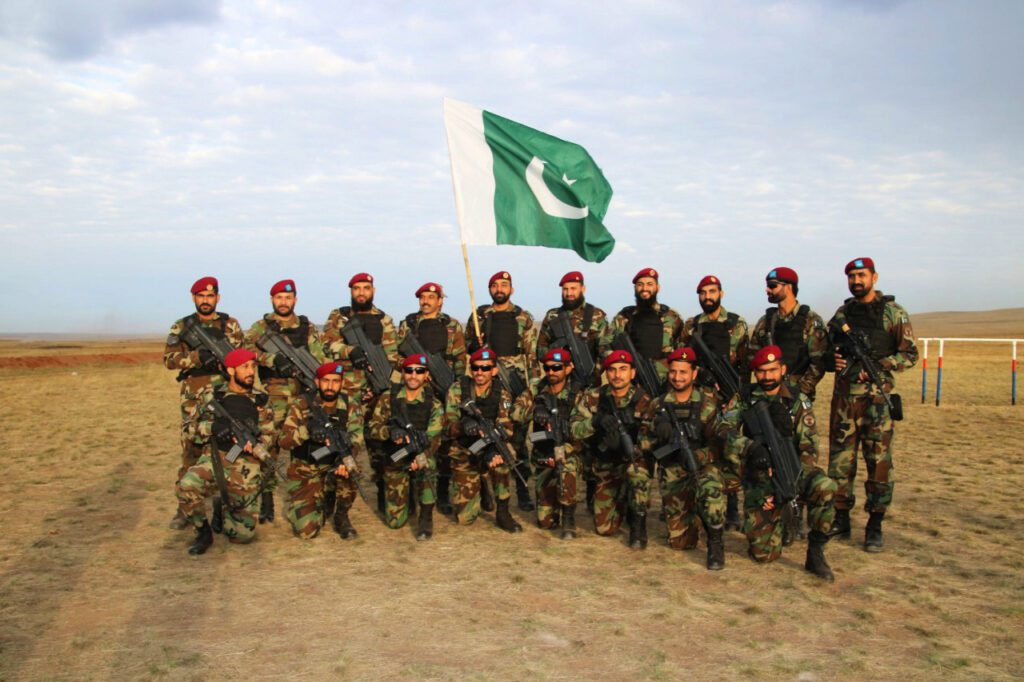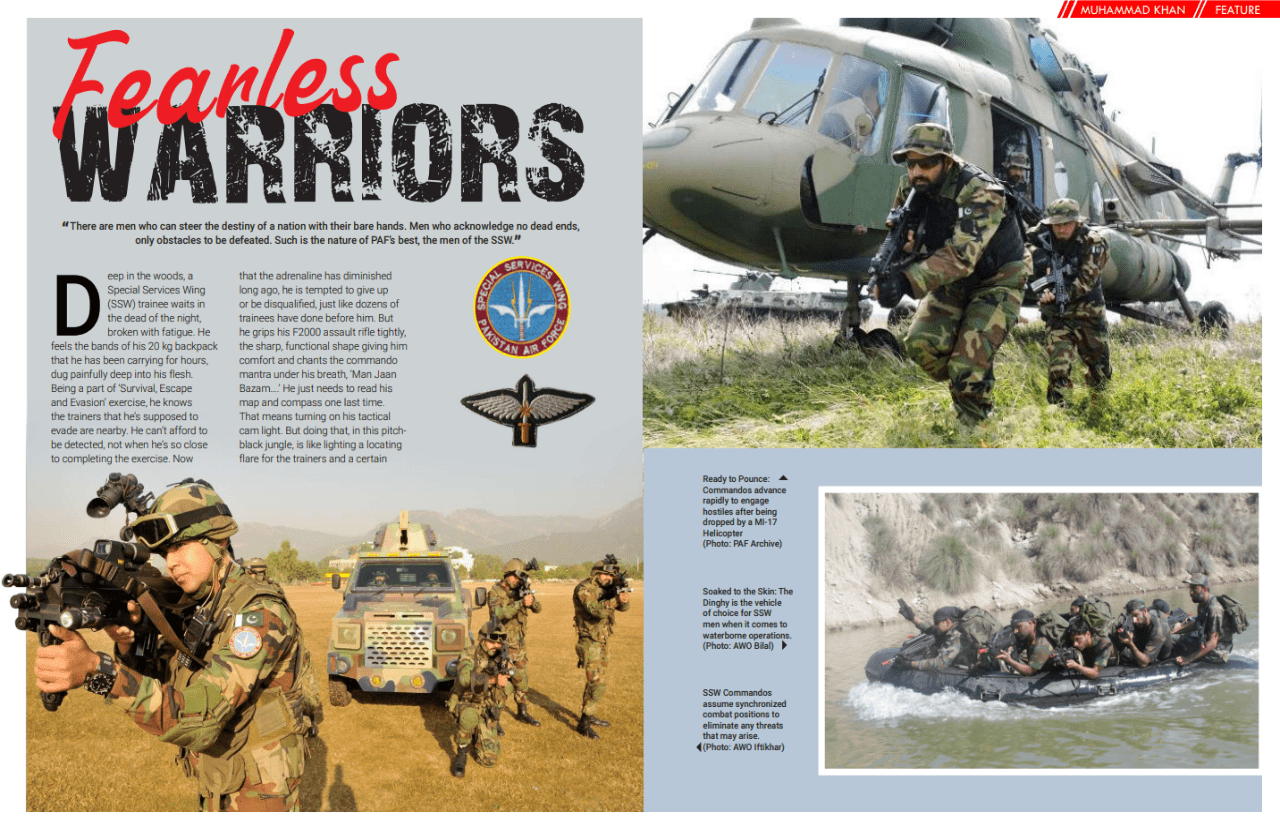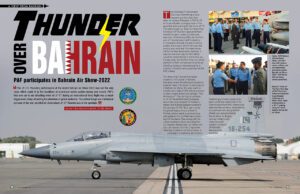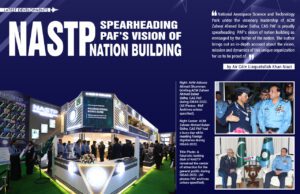“There are men who can steer the destiny of a nation with their bare hands. Men who acknowledge no dead ends, only obstacles to be defeated. Such is the nature of PAF’s best, the men of the SSW.”
Deep in the woods, a Special Services Wing (SSW) trainee waits in the dead of the night, broken with fatigue. He feels the bands of his 20 kg backpack that he has been carrying for hours, dug painfully deep into his flesh. Being a part of ‘Survival, Escape and Evasion’ exercise, he knows the trainers that he’s supposed to evade are nearby. He can’t afford to be detected, not when he’s so close to completing the exercise. Now that the adrenaline has diminished long ago, he is tempted to give up or be disqualified, just like dozens of trainees have done before him. But he grips his F2000 assault rifle tightly, the sharp, functional shape giving him comfort and chants the commando mantra under his breath, ‘Man Jaan Bazam….’ He just needs to read his map and compass one last time. That means turning on his tactical cam light. But doing that, in this pitch-black jungle, is like lighting a locating flare for the trainers and a certain capture. But he has no choice. He listens to the rustle of the leaves, anything that would suggest troops nearby. On hearing nothing, he readies his map and compass in the dark and turns his light on for a few seconds. “Light!” He hears a vengeful yell from a trainer not far from his location. But the few seconds that he had to read the map would suffice. He hastily stuffs the map in his backpack and disappears into the night, leaving no trace for the trainers to follow.
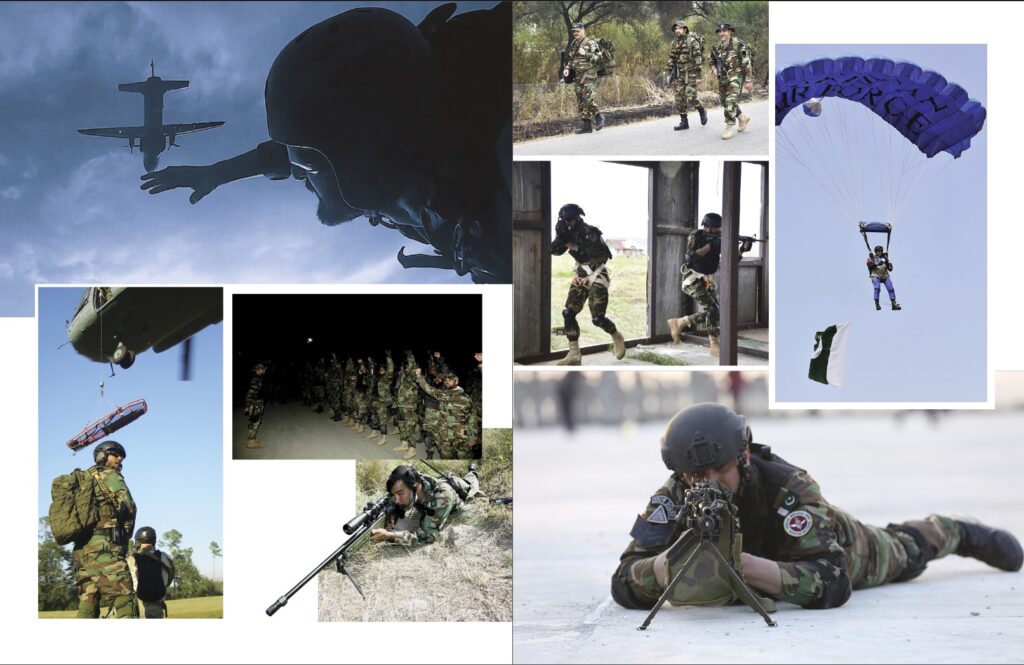
The Special Services Wing, is a highly specialized and exclusive unit of Pakistan Air Force. Since its inception in 2000, the unit has to its name several high-profile and extreme-risk operations, some of which the public would never know.
The origin of the SSW can be traced back to the original No 312 Air Warfare Wing in the late 60s. The training was conducted at Cherat Base, along with the other Special Forces. The objective of the Special Air Warfare wing was to conduct intelligence-based operations, within the country and on enemy territory.
The wing was also deployed at PAF Base Dhaka in 71 for defense of air assets. After 71, it was ascertained that the air bases lacked defensive capabilities. This led to the creation of the 312 Ground Combat Wing, which specialized in defence of air assets. In the decades that followed, officers and airmen of the PAF got training in various commando and advanced courses with the Army SSG on a voluntary basis.
Following the Kargil war, Air Chief Marshal Pervaiz Mehdi Qureshi realized that the PAF lacks the capability when it comes to the domain of special operations. That is when the Ground Combat Wing was converted to a Commando/Special Services Wing in late 90’s. Men who had been taking part in commando courses were gathered and out of hundreds, 89 airmen and 6 officers were selected.
As you enter the home of SSW, you are greeted by a layout that is judicious in its hardihood. The humble office/hosting area could be termed comfortable but that is as far as the indulgence goes. As soon as you venture farther into the Base, you can feel an aura of functional primitiveness. One shouldn’t make any mistakes, though, the Base is more than well-equipped to serve its purpose. The reason for this coarse aura is the fact that the purpose for the Base demands ruggedness.
The SSW has three major objectives: the protection of the Chief of the Air Staff, the defense of PAF air bases & assets and third, the most perilous one, conducting operations to target enemy air bases, assets and forward radars. It goes without saying that the offensive role rarely stays constrained to bases or radars. SSW Commandos operate under conditions unfathomable to the common man.

“The name ‘Al-Swaiq’ (thunderstorm) was chosen for SSW from the Quran for its aptness in describing what the force stood for. The wing is further divided into three special ops squadrons, which specialize in different terrains and tenacities; ‘Al-Raad’ (clap of thunder), ‘Al-Burq’ (lightning) and newly raised ATT (Anti-Terrorist Training) Sqn. The members of the Al Raad specialize in operations conducted in mountainous and jungle terrain, the Al Burq squadron is adept in operations in deserts and plains, while the ATT Sqn specializes in hostage rescue operations during anti-terrorist role” explains Wg Cdr Muhammad Shakeel Mughal, officer commanding SSW.
“In the air force, everybody is aware that tenure at the Base is a life style unlike any other. Every officer that spends time here comes out a different man,” says Wg Cdr Muhammad Noor Babar as he drives us around. “The boys that come here have some ideas in their mind about how tough they are and how the course would be a breeze for them. We beat out that cockiness in the first few days,” he adds with a chuckle.
The officers and airmen that want to join the SSW are put through an initial training course on the Base. The purpose of this training is to weed out the weak. It includes strenuous route marches with each trainee laden with full combat load. The run has to be completed under 12 hours. Another exercise that sees a considerable rate of dropouts is the infamous 4-mile run with full equipment, which has to be completed in under 35 minutes. The attrition rate is understandably very high, as is the rate of injuries.
The Base is vigor personified. Almost every man you see is engaged in one strenuous activity or the other. We pass several groups of fully-equipped men marching to synchronized slogans of ‘Allah Hoo!’ the ground seemingly quivering with the accumulated force of their knee-high boots. These include all levels of trainees. The ones who are a part of the initial training course and the more advanced ones who have returned after passing the basic commando course with the SSG in Cherat to train in advanced SSW courses. The ground is all slopes, making even walking in the premises a constant exercise.
This design is cunningly deliberate, the purpose obvious. The Base has a considerably large training area which has a concrete foundation. This is where most of the exercises are conducted, target practice and loaded arms handling. On one patch, trainees wielding 7.62 caliber Kalashnikovs move with well-oiled precision, assuming complex combat postures without missing a beat. Another group falls in for their sixth physical training exercises of the day. For a major portion of the day, the only respite for these trainees is the transition from one exercise to another.

“You’ll notice that all these men have their allocated numbers written in chalk on their vests, on their front and back. The purpose of these numbers is more than just convenience in addressing them,” explains senior instructor Ishaaq, a young commando with a voice that echoes over the vast training area. “Trainees are intentionally put through a regime where they are stripped of all individual sense of self. All ranks are stripped away.”
This rationale is visible in other aspects of life at the Base, as well. The trainees live in rudimentary conditions. The living arrangements, if they can be called that, are rugged camouflaged tents lined with rough beds. These quarters are shared by 8 to 10 trainees, who are also responsible for their upkeep. The trainees get 3 meals a day, which is just as basic as the shelter they are provided with. It’s a tough life, to say the least. That is one of the reasons the attrition for the course is so high. This is an unfortunate yet vital requisite, as the SSW men are usually selected to go up against ludicrously unfavorable odds. The manifestation of this fact can be seen in the skydiving and Para trooping courses of the SSW.
A man leaping from a plane thousands of feet in the air takes guts that a very few can boast. The para trooping courses include Static Line jumps and Advanced Static Line jumps, in which there is fixed wire in the plane to which all jumpers’ chutes are attached, which pulls open the chute. Then comes skydiving from higher altitudes, which includes High Altitude High Opening (HAHO) and High Altitude Low Opening (HALO) jumps.
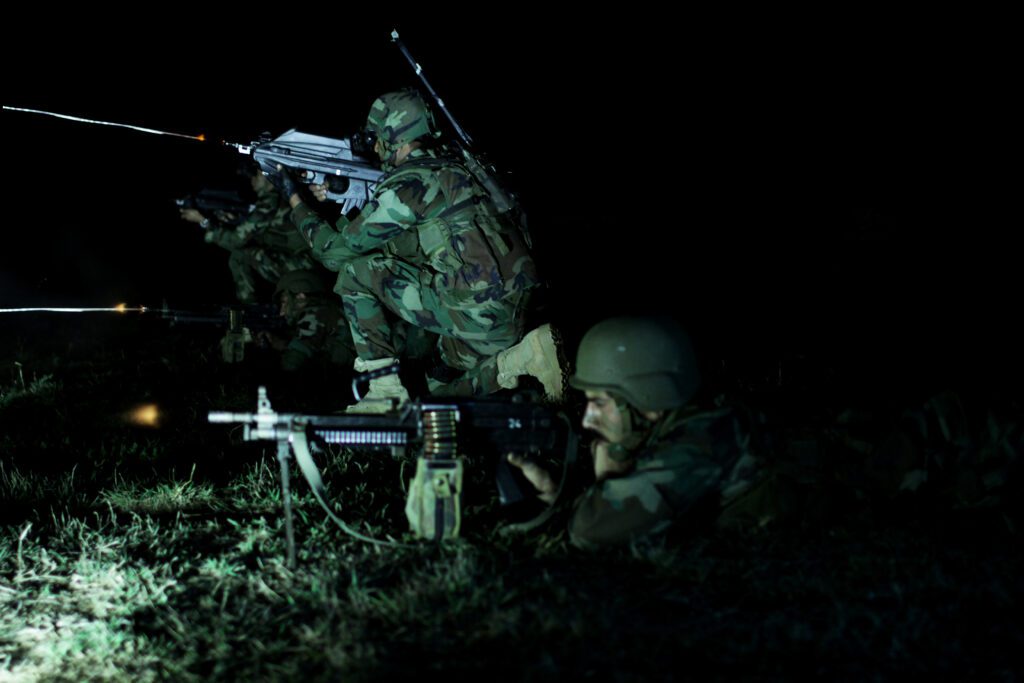
“The progression is static line jump, then advanced static line jump, rigger course, jumpmaster course, military skydiving, equipment training, skydiving with equipment, night skydiving and finally, night skydiving with equipment. There is no room for error. We have the Jumpmasters, who calculate and plan the jump, the Riggers who are experts in preparing chutes.” Explains Base Cdr Air Cdre Muhammad Yousaf, who has the unique honor of commanding all the three components of Special Forces of PAF during his career.
In 2007, when the Swat district was taken over by an unforeseen enemy, the entire nation was gripped by fear. Fortunately, the forces were well-prepared and jumped into the fray immediately. In Rah-e-Haq II and III, the PAF SSW along with Pak Army carried out successful operations in mountainous terrain. In the second battle of Swat, termed Rah-e-Rast, PAF’s fighter assets also took part alongside ground forces. The SSW played their part, as well. From lazing targets, unconventional warfare, special reconnaissance ops, direct action by sabotage and offensive raiding to combat search and rescue missions (CSAR), the SSW made major contributions to eliminating one of the gravest threats the nation has ever faced.
“It was a short-lived victory. Insurgents had realized that crippling the air force would grant them an undeniable advantage. The PAF became their primary target.” reminisces Wg Cdr Shakeel, holding a sandwich as we are served tea on the open hatch of a Vigo. “The threat level was sky-high. Buses full of our children were being targeted, Bases were being attacked. The Badaber and Minhas attacks are prime examples. The PAF lost several good men…men who we knew personally, as well.” he confides, his voice low. He sighs and puts down the sandwich, untouched.
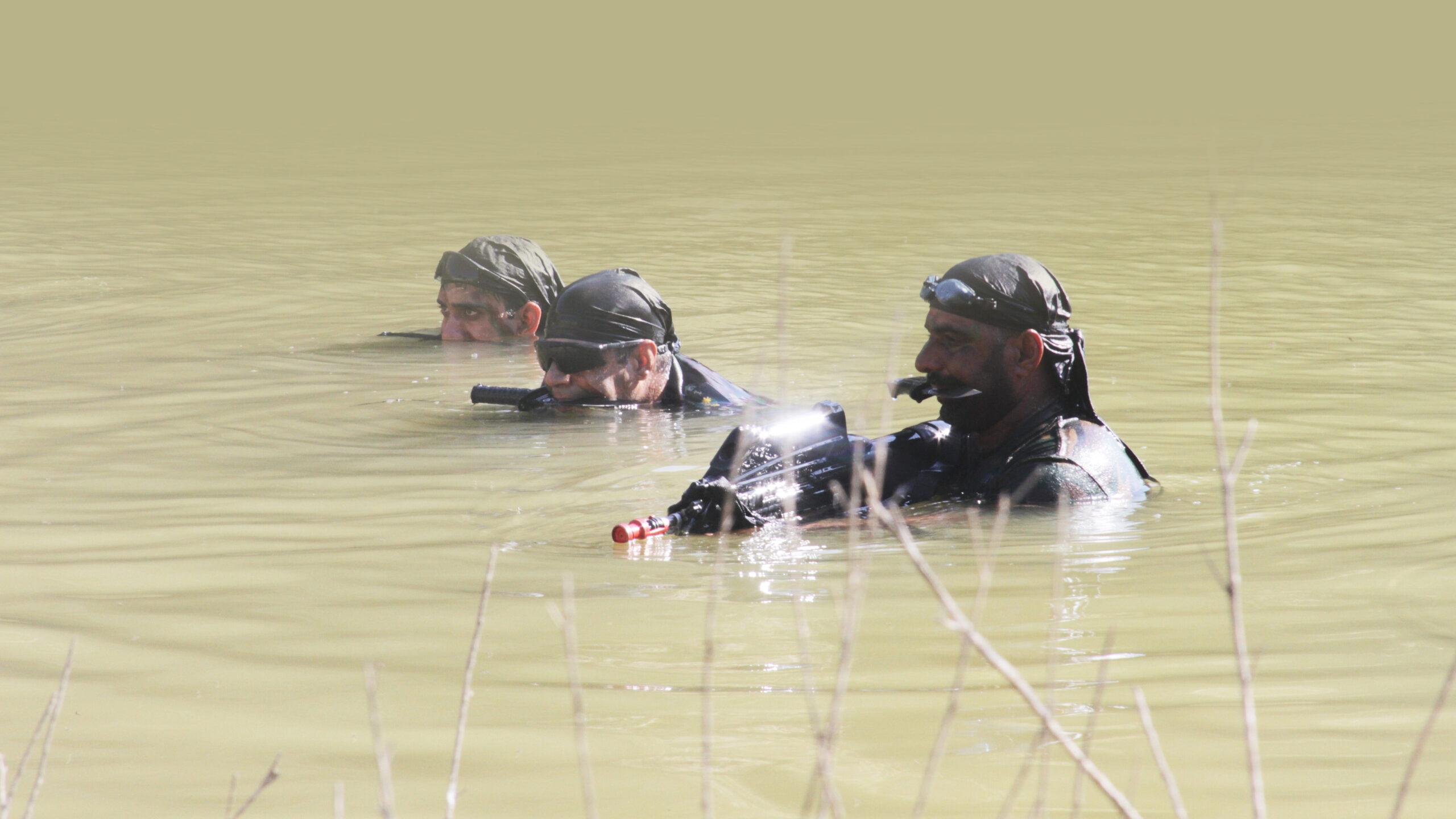
Another area where the SSW undergo strenuous training is Close Quarters Combat (CQC) operations. Such operations require trained personnel who storm into a room full of armed hostiles, without a moment of hesitation. The SSW are these rarest of men. “Close Quarter Combat is a very complex endeavor. It is crucial that flooding the room is carried out swiftly. There needs to be very little delay in the first man entering the room and the last man. Each man has their cone of targets that he is to engage efficiently and exclusively. The primary factors that come into play are the element of surprise, which means eliminating the target before he gets over the shock. This needs to be complimented by maximum and constant speed.” Elaborates Air Cdre Muhammad Yousaf, making a rough drawing to elucidate the process. “Next is what we call violence of action. You need to keep the firepower on to ensure constant pressure. Fearful enemies make mistakes, which will give you openings.”
“Every time you move into a room, you own it but only as long as you’re in it. If you need to enter it again, there’s a huge chance that you’ll have to clear it again.” adds Wg Cdr Shakeel.
The training of the personnel is carried out by the highly professional instructors, who are considered to be the back bone of training regime. The SSW instructors are all commandos themselves because only real-life experience can enable you to train the best. From lectures, to handling weapons, to lazing, everything is taught by a veteran that had done it in real-life scenarios.
To cater for ever-rising challenges in the security warfare scenario, SSW conducts specialized training of its troops encompassing airborne, waterborne and land warfare operations.
It includes training commandos in counter-terrorist operations, hostage situations, room and compound clearance, urban combat and skills of such nature. “The teams of SSW are also participating in national and international level exercises’, elaborates Air Cdre Muhammad Yousuf. ‘The joint national and international exercises provide commandos with the exposure which is a key factor in their overall grooming. This experience helps them learn new tactics and methods in the ever-changing 5th generation warfare. Their training has made them more potent and formidable, a force not to mess-up with”, he assures.
The SSW is a force that is bred and reared to take on insurmountable odds. The mission is their singular obsession. They will obliterate any and all that stands between them and the mission. This is what makes the SSW men the most feared and capable warriors in the nation’s arsenal.
